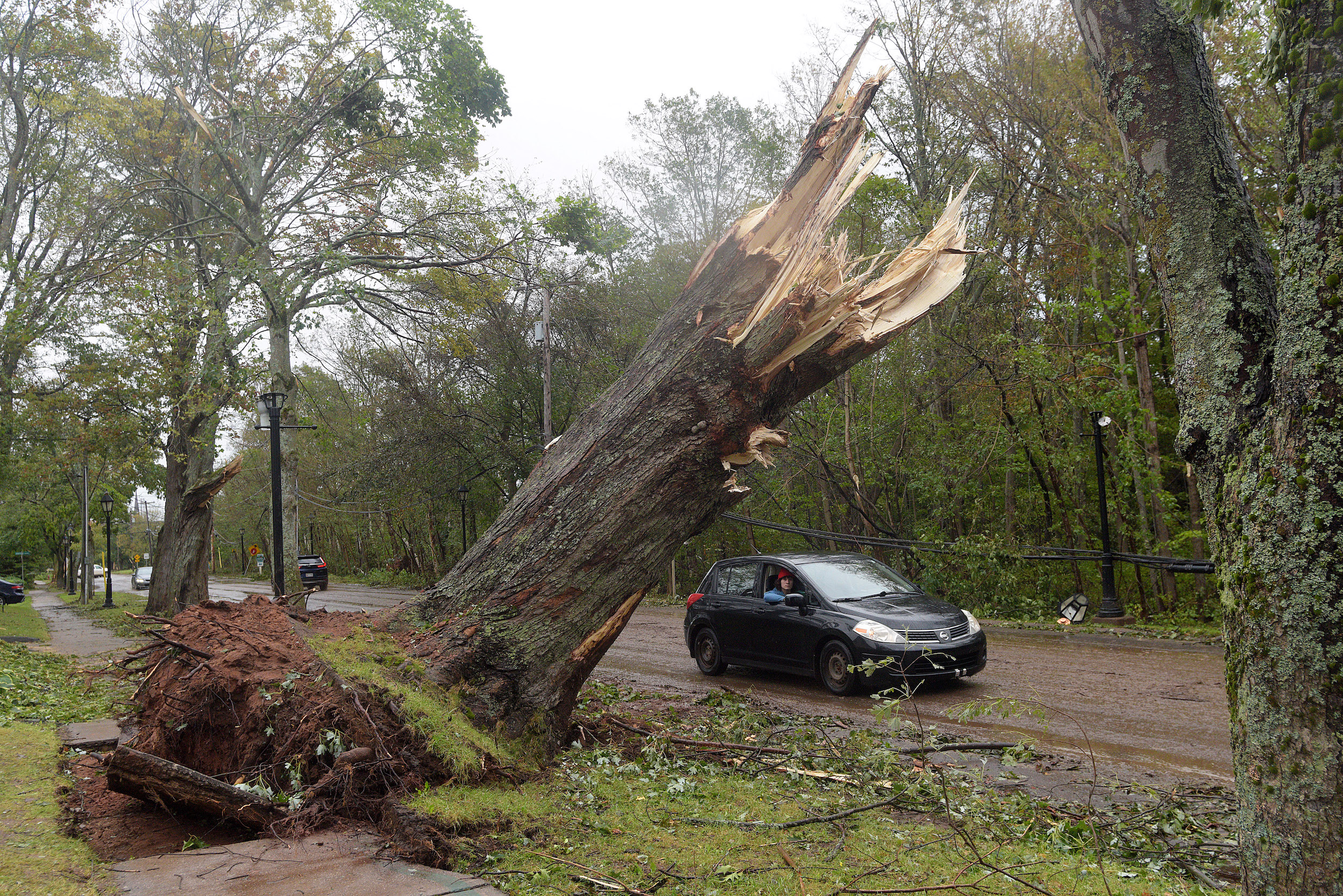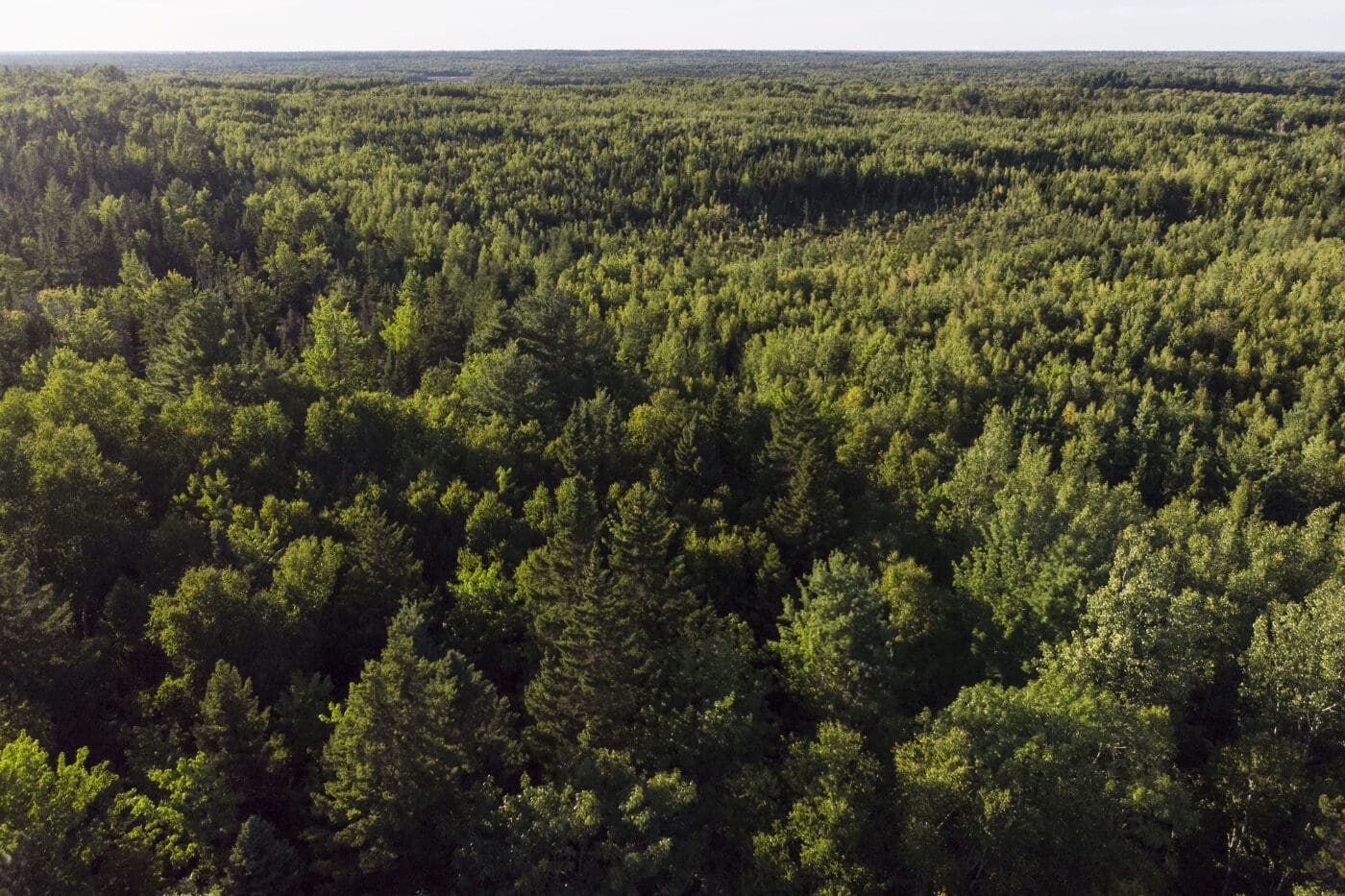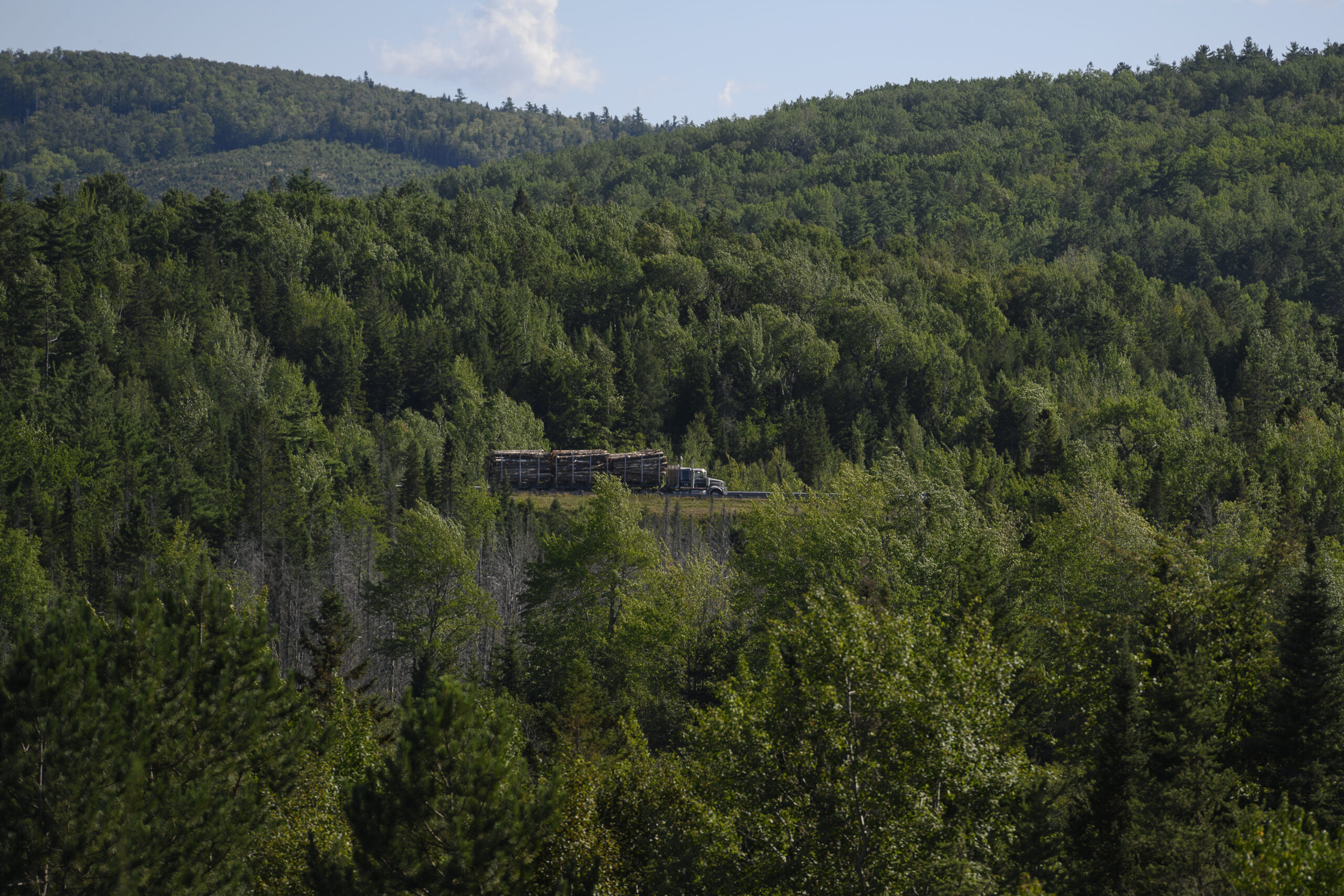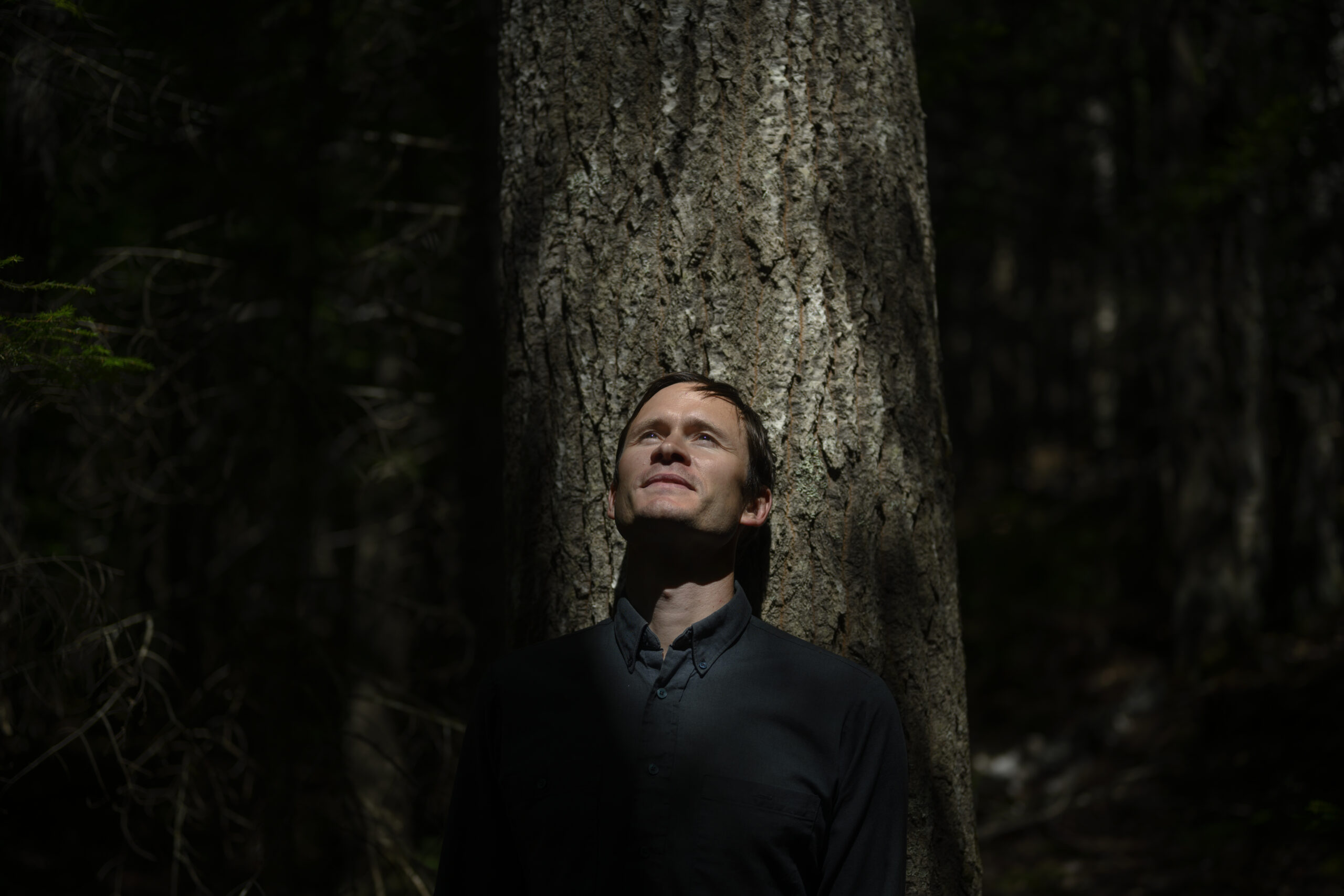
Rocky Mountain coal mine in Alberta takes next step to expansion
In Alberta, a massive open-pit coal mine near Jasper National Park is hoping to expand...
Matt Miller grew up alongside many of the trees on his parents’ woodlots in rural Nova Scotia. But while most of the trees survived “Hurricane Matt” — his rambunctious childhood and some early, clumsy lessons in forestry from his father — many didn’t survive Hurricane Fiona.
“It definitely feels like we lost some friends back there,” he explains, referring to the damage that happened to his family’s two woodlots in September, during the worst storm to ever hit eastern Canada.
Located in Greenhill and Earlton, the family’s forests are home to a variety of tree species and make up around 500 acres.
“There’s the loss associated with the big trees, those charismatic, solid trees that you can wrap your arms around and stare up into the canopy, but I think some of the hardest losses are those younger trees that I saw grow up before my eyes,” Miller said.
The family harvests sawlogs, which are sold to a local mill, as well as firewood for selling and personal use. But for them, income is secondary to the real value of the trees. Miller’s grandfather’s ashes are buried in the lot they live on and the healthy forest is his legacy.
Hurricane Fiona made landfall as a post-tropical storm near Whitehead, N.S., on Sept. 24. After two days of heavy rain and wind gusts that reached 179 km/h at their peak, as reported by Environment Canada, the aftermath was three deaths in eastern Canada and severe damage to homes and infrastructure across Nova Scotia, New Brunswick, Prince Edward Island and Newfoundland and Labrador.

Fiona also ripped into the infrastructure of natural habitats, flattening forests, toppling trees and damaging generational woodlots like Miller’s. Wind disturbance is part of nature, but climate change is expected to increase the intensity of storms hitting Atlantic Canada.
Two decades before Fiona came Hurricane Juan in 2003, which reached wind speeds of 160 km/h and damaged over 600,000 hectares of trees. In 2019, Hurricane Dorian hit Sambro Creek with wind speeds of 155 km/h and caused an estimated $105 million in insured damage, according to the Insurance Bureau of Canada.
The increased intensity of these storms is prompting many to wonder what climate resiliency looks like in a region shaped by lumber markets — not ecosystem health — for the past 100 years.
“As climate change intensifies, we’re going to experience these impacts more and more,” said Daimen Hardie, executive director of New Brunswick-based non-profit Community Forests International.
“We’ve really set ourselves up for this risky situation,” he said. “Whenever something like this happens, it’s a reckoning for everybody.”

The Wabanaki-Acadian forest covers much of the Maritimes and parts of the northeastern United States. The border between boreal forest to the north and temperate species to the south, the Wabanaki-Acadian forest is home to a rich mixture of native species that should promote high biodiversity.
But the Maritime forest has changed a great deal since the time that the members of the Wabanaki Confederacy — including the Mi’kmaq, Maliseet, Passamaquoddy, Penobscot and Abenaki — were stewarding it. Old-growth forests have been cleared for agriculture and heavily logged: according to the Nova Scotia Nature Trust, only 0.6 per cent of the province’s forest is over 100 years old. And replanting has usually meant focusing on a less diverse collection of species and ages than was here originally.
That youth and homogeneity puts the region at greater risk during natural disasters. After Hurricane Juan, University of New Brunswick forest management professor Anthony Taylor led an extensive study looking at how forests are impacted by extreme winds.

Published in 2019, the study used aerial photography and satellites to analyze how wind damage varied based on topography, weather, soil and forest structure. It found that having a greater amount of hardwood species and pine reduced the effect of wind damage to a lot or forest. Tall stands were most vulnerable, especially those dominated by shallow-rooted spruce and balsam fir.
Unfortunately, the two most vulnerable species are also overrepresented in the region, as a result of their value for softwood lumber and pulp and paper.
“Over the last century, we’ve been carrying out forest management practices that promote more spruce and fir,” said Taylor. “So by default in the forest, it’s already been a bit more vulnerable to blowdown, because we have much more of the spruce and fir.”
Taylor’s study found that while forests dominated by a single species that had been replanted after a clearcut were hurt by wind, so were areas in mixed forests that were more selectively thinned. Both harvesting methods created vulnerabilities.
“I don’t know if anyone has a solution yet, but it’s definitely on a lot of minds. If you believe the science and the projections of climate change, then we’re going to be in for more wind and it’s going to impact our forests,” Taylor said. “If we know that our spruce and fir forests tend to be more susceptible to wind, but we really depend on them for our economy here, then what do we do?”
He also pointed out a caveat from the study — which suggested that regardless of species or topography, 10 minutes of sustained winds of 100 km/h can topple most trees.
“At a certain threshold it doesn’t matter what your forest is made of — likely a lot of it is going to blow down,” he said.
Recovery from Fiona won’t happen quickly. Several woodlot associations have called on provincial governments to help fund recovery operations. Nova Scotia has created a $3.5 million recovery fund for private woodlot owners, while Prince Edward Island announced an Emergency Forestry Task Force on Oct. 28 to assist woodlot owners.

Community Forests International is encouraging land owners to consider making recovery decisions with biodiversity in mind. Hardie said he’s concerned that some woodlot owners will be tempted to clearcut or overharvest sections with heavy losses to avoid losing money on damaged trees.
But even before Fiona, his team was working with a large number of private woodlot owners trying to make forestry more resilient, attempting to balance profits with ecological goals through careful harvesting and planting. The organization works with members to share the latest forest science, providing advice on how to care for trees and replant damaged areas while also coordinating carbon offsets that pay landowners for keeping trees intact.
The storm was hard for those woodlots owners emotionally, as well as financially.
“There’s a lot of mourning going on right now. It’s people who’ve taken more of a sustainable or ecological approach. They’ve put a lot of care into restoring the forest and then to see that work rolled back is definitely hard for a lot of reasons,” said Hardie.
Taylor’s findings from 2019 are reflected in Miller’s observation of the forest floor, as he surveyed the damage after Fiona, looking for patterns.
“I think diversity is important. To my eye those sort of mixed species — mixed multi-age stands — seem to be the ones that have held up the best,” he said.
Miller is a member of the North Nova Forest Owner’s Co-op, so he’s not entirely on his own in dealing with the aftermath of the storm. Staff from the co-op showed up with dedicated contractors to help Miller handle the devastation on one of his family’s 250-acre woodlots.
As he considers the damage, he’s also focused on the future — balancing the need for financial recovery with ensuring that enough light and nutrients are left to allow a diverse forest to regrow.
“For us as family forest owners wanting to manage for the long term, it becomes a question of salvaging what you can in a way that doesn’t compromise your longer term or ecological goals,” he said.
For woodlot owners choosing to carry on the mission of restoring the biodiversity of the Wabanaki-Acandian forest, that can mean leaving some windblown trees on the forest floor to provide nutrients and habitat.
It will also mean prioritizing a mix of ages and species, putting in white pine and temperate hardwoods like birch and maple that are more likely to survive heavy wind and succeed in a warming climate. As climate change continues, cold-hardy boreal species like spruce and balsam fir — once encouraged for their industrial value — will be less naturally successful.
“Nothing is over for the forest. We tend to feel this loss and like it’s the end of something — I suppose it is the end of something — but at the same time, it’s just the start of something new,” Miller said.
Get the inside scoop on The Narwhal’s environment and climate reporting by signing up for our free newsletter. A $335 million funding commitment to fund...
Continue reading
In Alberta, a massive open-pit coal mine near Jasper National Park is hoping to expand...

A trade war could help remake B.C.’s food system, but will family farmers be left...

First Nations are leading efforts to make sure lake sturgeon can find a home in...
